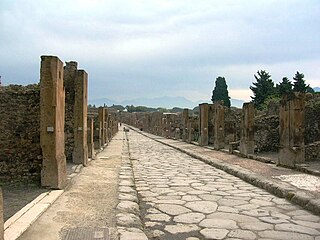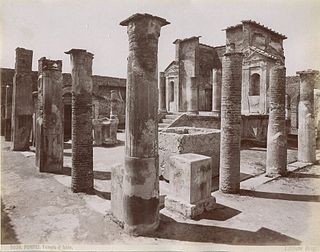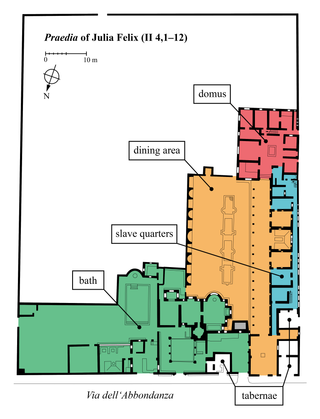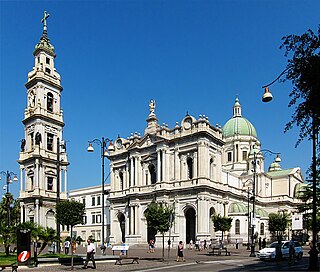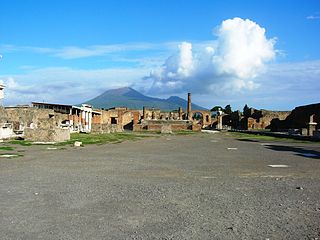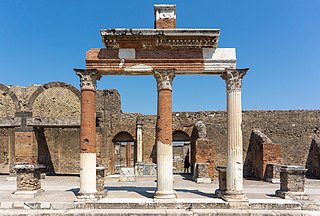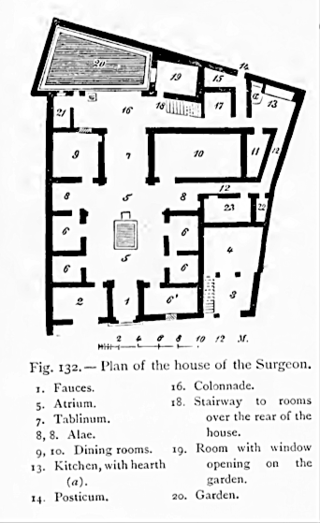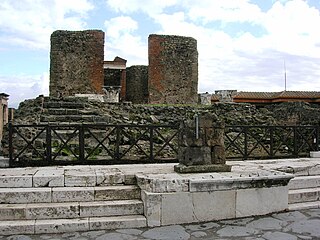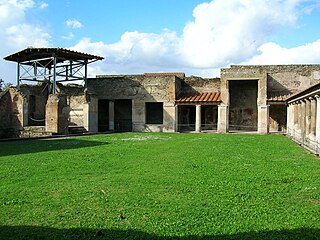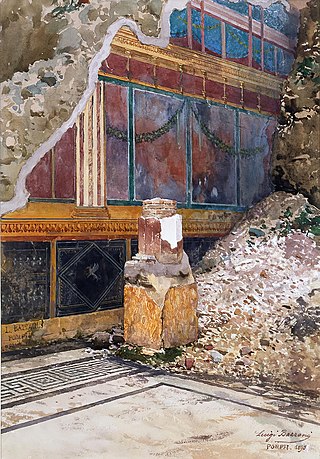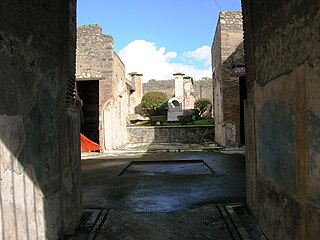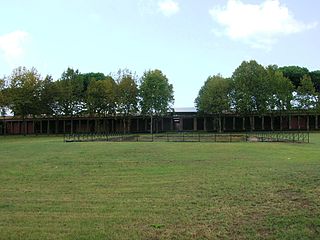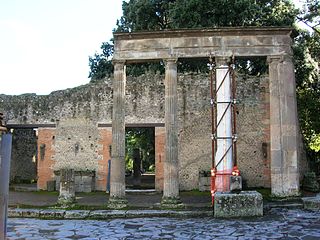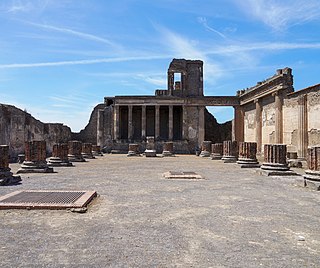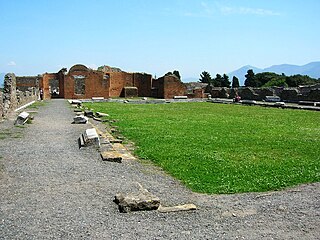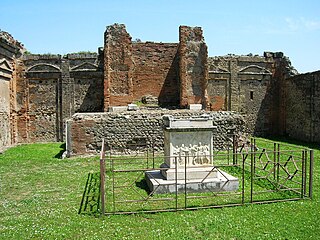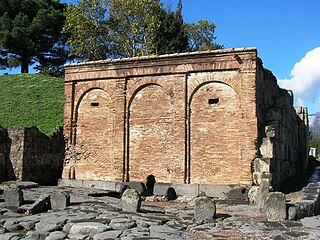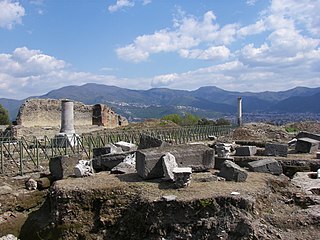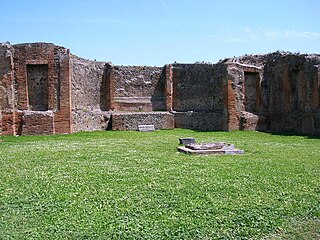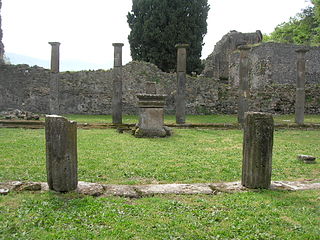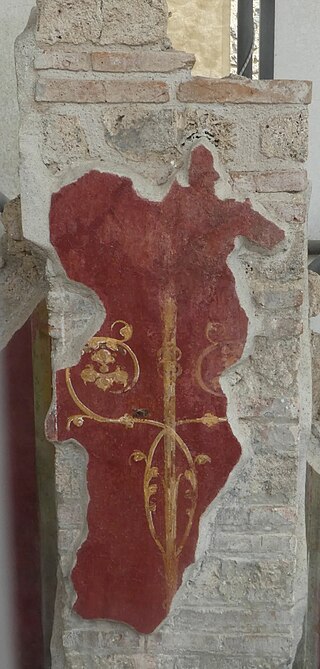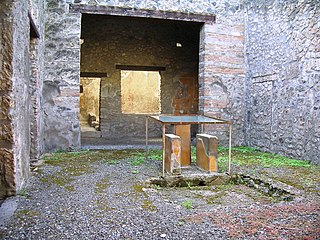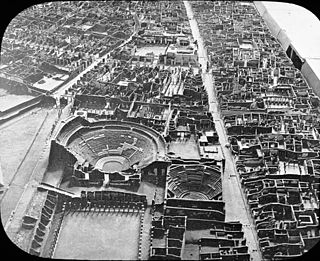35 Sights in Pompei, Italy (with Map and Images)
Legend
Welcome to your journey through the most beautiful sights in Pompei, Italy! Whether you want to discover the city's historical treasures or experience its modern highlights, you'll find everything your heart desires here. Be inspired by our selection and plan your unforgettable adventure in Pompei. Dive into the diversity of this fascinating city and discover everything it has to offer.
Sightseeing Tours in Pompei1. Pompeii
The archaeological excavations of Pompeii have returned the remains of the ancient city of Pompeii, near the hill of Civita, at the gates of modern Pompeii, buried under a blanket of ashes and lapilli during the eruption of Vesuvius in 79, together with Herculaneum, Stabia and Oplontis.
2. Villa of the Mysteries
The Villa of the Mysteries is a well-preserved suburban ancient Roman villa on the outskirts of Pompeii, southern Italy. It is famous for the series of exquisite frescos in Room 5, which are usually interpreted as showing the initiation of a bride into a Greco-Roman mystery cult. These are now among the best known of the relatively rare survivals of Ancient Roman painting from the 1st century BC.
3. House of the Faun
The House of the Faun, constructed in the 2nd century BC during the Samnite period, was a grand Hellenistic palace that was framed by peristyle in Pompeii, Italy. The historical significance in this impressive estate is found in the many great pieces of art that were well preserved from the ash of the eruption of Mount Vesuvius in 79 AD. It is one of the most luxurious aristocratic houses from the Roman Republic, and reflects this period better than most archaeological evidence found even in Rome itself.
4. Lupanar (brothel)
.jpg)
The Lupanar is the ruined building of an ancient Roman brothel in the city of Pompeii. It is of particular interest for the erotic paintings on its walls, and is also known as the Lupanare Grande or the "Purpose-Built Brothel" in the Roman colony. Pompeii was closely associated with Venus, the ancient Roman goddess of love, sex, and fertility, and therefore a mythological figure closely tied to prostitution.
5. Temple of Isis
The Temple of Isis is a Roman temple dedicated to the Egyptian goddess Isis. This small and almost intact temple was one of the first discoveries during the excavation of Pompeii in 1764. Its role as a Hellenized Egyptian temple in a Roman colony was fully confirmed with an inscription detailed by Francisco la Vega on July 20, 1765. Original paintings and sculptures can be seen at the Museo Archaeologico in Naples; the site itself remains on the Via del Tempio di Iside. In the aftermath of the temple's discovery many well-known artists and illustrators swarmed to the site.
6. House of Julia Felix
The House of Julia Felix, also referred to as the praedia of Julia Felix, is a large Roman property on the Via dell'Abbondanza in the city of Pompeii. It was originally the residence of Julia Felix, who converted portions of it to apartments available for rent and other parts for public use after the major earthquake in 62 AD, a precursor to the eruption of Mount Vesuvius in 79 AD that destroyed Pompeii.
7. Temple of Apollo
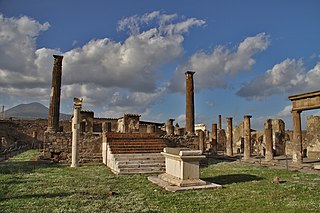
The Temple of Apollo, also known as the Sanctuary of Apollo, is a Roman temple built in 120 BC and dedicated to the Greek and Roman god Apollo in the ancient Roman town of Pompeii, southern Italy. The sanctuary was a public space influenced by Roman colonists to be dedicated to Greco-Roman religion and culture.
8. Temple of Jupiter
The Temple of Jupiter, Capitolium, or Temple of the Capitoline Triad, was a temple in Roman Pompeii, at the north end of its forum. Initially dedicated to Jupiter alone, it was built in the mid-2nd century BC at the same time as the Temple of Apollo was being renovated – this was the area at which Roman influence over Pompeii increased. So Roman Jupiter superseded the Greek Apollo as the town's leading divinity. Jupiter was the ruler of the gods and the protector of Rome, where his temple was the center of Roman religion and of the cult of state.
9. Santuario della Beata Vergine del Santo Rosario
The Pontifical Shrine of the Blessed Virgin of the Rosary of Pompei is a Roman Catholic cathedral, Marian pontifical shrine, and Pontifical minor basilica commissioned and co-founded by Bartolo Longo and his wife the Countess Mariana di Fusco, located in Pompei, Italy. It is the see of the Territorial Prelature of Pompei.
Wikipedia: Shrine of the Virgin of the Rosary of Pompei (EN)
10. Foro di Pompei
The Forum of Pompeii is a Roman forum, buried by the eruption of Vesuvius in 79 and found following the archaeological excavations of ancient Pompeii. The structure was the main square of the city and represented the political, economic and religious center in which demonstrations, commercial negotiations and debates took place; It is, of its kind, one of the best preserved of the ancient Italic cities.
11. Casa dei Dioscuri
The House of the Dioscuri is a Roman house, buried by the eruption of Vesuvius in 79 and found following the archaeological excavations of ancient Pompeii: it is one of the largest and best decorated houses in the city and owes its name to a painting located at the entrance, depicting the Dioscuri Castor and Pollux, now preserved in the National Archaeological Museum of Naples.
12. Macellum
The Macellum of Pompeii was located on the Forum and as the provision market of Pompeii was one of the focal points of the ancient city. The building was constructed in several phases. When the earthquake of 62 AD destroyed large parts of Pompeii, the Macellum was also damaged. Archeological excavations in the modern era have revealed a building that had still not been fully repaired by the time of the eruption of Mount Vesuvius in 79 AD.
13. Casa del chirurgo
The House of the Surgeon is one of the most famous houses in the ancient Roman city of Pompeii and is named after ancient surgical instruments that were found there. Along with the rest of the city, it was buried and largely preserved under 4 to 6 m of volcanic ash and pumice in the Eruption of Mount Vesuvius in 79 AD.It was excavated in 1770 by Francesco La Vega.
14. Temple of Fortuna Augusta
The temple of Fortuna Augusta is a Roman temple, buried during the eruption of Vesuvius in 79 and found following the archaeological excavations of ancient Pompeii: it was dedicated to Emperor Augustus.
15. Forum Baths
The Baths of the Forum, also called the Baths of Fortune, are a thermal complex from Roman times, buried by the eruption of Vesuvius in 79 and found following the archaeological excavations of ancient Pompeii: they take their name from their proximity to the forum.
16. Terme Stabiane
The Stabian Baths are an ancient Roman bathing complex in Pompeii, Italy, the oldest and the largest of the 5 public baths in the city. Their original construction dates back to ca. 125 BC, making them one of the oldest bathing complexes known from the ancient world. They were remodelled and enlarged many times up to the eruption of Vesuvius in 79 AD.
17. House of the Silver Wedding
The House of the Silver Wedding is the name given to the archaeological remains of a Roman house in Pompeii, buried in the ash from the Eruption of Mount Vesuvius in 79 AD. The house was excavated in 1893 and was named after the silver wedding anniversary of Umberto I of Italy and Margherita of Savoy, which took place in that year.
18. House of the Ara Maxima
The house of the Ara Massima is a house from Roman times, buried during the eruption of Vesuvius in 79 and found following the archaeological excavations of ancient Pompeii: it is also called the house of Narcissus or the house of Pinarius.
19. Domus Lucreti
The house of Marcus Lucretius is a house from Roman times, buried during the eruption of Vesuvius in 79 and found following the archaeological excavations of ancient Pompeii: also called the house of the Musicians, it owes its name to that of the alleged owner, Marcus Lucretius.
20. Palestra Grande
The large gym, located in Regio II, is a Roman gym, buried by the eruption of Vesuvius of 79 and found following the archaeological excavations of ancient Pompeii: its name derives from the fact that it was the greatest gymnastic system of the city.
21. Foro Triangolare
The Triangular Forum is a Roman forum, buried by the eruption of Vesuvius in 79 and found following the archaeological excavations of ancient Pompeii; The square was mainly used for equestrian races and as a place of recreation while waiting to attend the performances of the nearby theaters.
22. Basilica
The Basilica was a public building from Roman times, buried by the eruption of Vesuvius in 79 and found following the archaeological excavations of ancient Pompeii: it was used both as a court and as a venue for commercial negotiations.
23. Edificio di Eumachia
The Building of Eumachia was a public building from Roman times, buried by the eruption of Vesuvius in 79 and found following the archaeological excavations of ancient Pompeii: the building was used as a wool market or as the headquarters of the fullones guild.
24. Tempio di Vespasiano
The temple of Vespasian, also known as Aedes Genii Augusti, is a Roman temple, buried by the eruption of Vesuvius in 79 and found following the archaeological excavations of ancient Pompeii: the sacred structure was dedicated to the genius of the Roman emperors.
25. Doric Temple
The Doric Temple is a Roman temple, buried by the eruption of Vesuvius in 79 and found following the archaeological excavations of ancient Pompeii. It is one of the buildings with the greatest Greek influences in the city.
26. Quadriportico dei Teatri
The Quadriportico dei Teatri, also called the Gladiators' Barracks, is a Roman structure, buried by the eruption of Vesuvius in 79 and found following the archaeological excavations of ancient Pompeii: initially used as a foyer, it was later transformed into barracks for gladiatorial art.
27. Castellum aquae
The Castellum Aquae is a building from the Roman era, buried by the eruption of Vesuvius in 79 and found following the archaeological excavations of ancient Pompeii: its function was to collect drinking water and distribute it to the city water network.
28. Temple of Venus
The temple of Venus is a temple from the Roman era, buried by the eruption of Vesuvius in 79 and found following the archaeological excavations of ancient Pompeii: it was the temple where the patron deity of the city was worshipped, as well as one of the most sumptuous.
29. Santuario dei Lari Pubblici
The sanctuary of the Public Lares is a Roman temple, buried by the eruption of Vesuvius in 79 and found following the archaeological excavations of ancient Pompeii; inside, in all likelihood, the tutelary deities of the city were worshipped.
30. Casa dell'Efebo
The House of the Ephebe is a house from Roman times, buried during the eruption of Vesuvius in 79 and found following the archaeological excavations of ancient Pompeii: also called the house of Publius Cornelius Tegestes, from the name of the owner, it owes its name to the discovery of a statue depicting an ephebe.
31. Samnite Gymnasium
The Samnite Gym is a Roman gymnasium, buried by the eruption of Vesuvius in 79 and found following the archaeological excavations of ancient Pompeii: its function was to host gymnastic competitions or military and political meetings.
32. Casa VI 14, 28.33 Sog. Casa di Laocoonte
The House of Laocoön is a Roman house, buried during the eruption of Vesuvius in 79 and found following the archaeological excavations of ancient Pompeii: it owes its name to a cycle of paintings found in the atrium.
33. Schola Armaturarum
The Schola dashboard was a meeting house in Pompeii. It was excavated by Vittorio Spinazzola in 1915. The building consisted of a hall and some rooms behind it that still came from a predecessor building when a private house was here. The Schola Kingdarum probably served as a place of assembly of a military organization shortly before the fall of the city. During the excavations, there were numerous weapons that were once housed on shelves along the walls. The wood of the shelves had already passed largely during the excavations, but holes were still seen on a wall for the shelves. The wide entrance was once blocked with a wooden grille that could be reconstructed due to plaster casts. The wood of the grid had long passed, but left a cavity that was filled with plaster during the excavations. The pillars on both sides of the entrance were painted with trophies and weapons. Wall paintings with military badges and candelabries were also found inside the hall.
34. Casa della Venere in Bikini
The house of Venus in a Bikini, also known as the house of Maximus, is a house from Roman times, buried during the eruption of Vesuvius in 79 and found following the archaeological excavations of ancient Pompeii.
35. Teatro Piccolo
The theatre area of Pompeii is located in the southwest region of the city. There are three main buildings that make up this area: the Large Theatre, the Odeon, and the Quadriporticum. These served as an entertainment and meeting centre of the city. Pompeii had two stone theatres of its own nearly two decades before the first permanent stone theatre was erected in Rome in the 50s BC.
Share
How likely are you to recommend us?
Disclaimer Please be aware of your surroundings and do not enter private property. We are not liable for any damages that occur during the tours.
